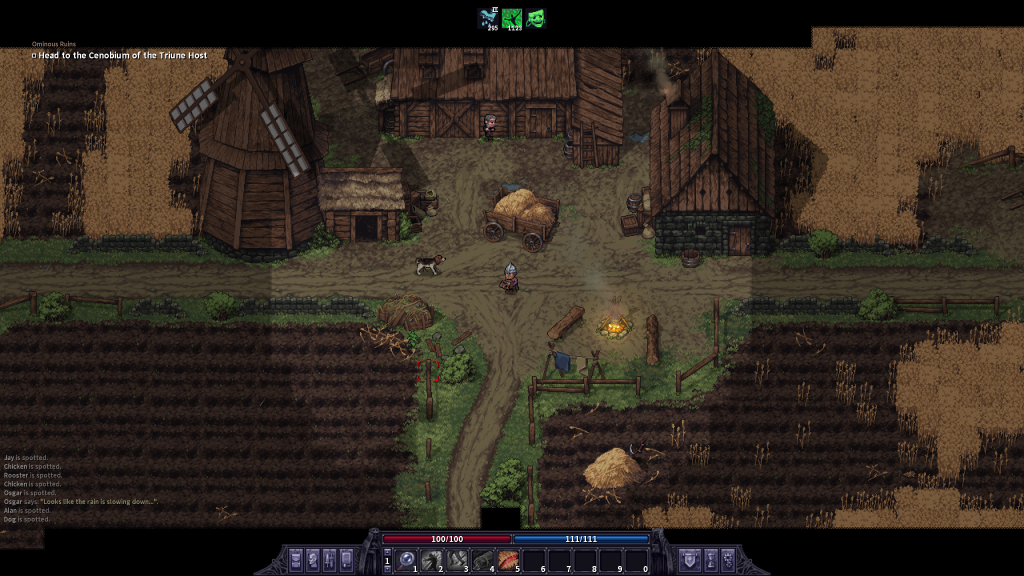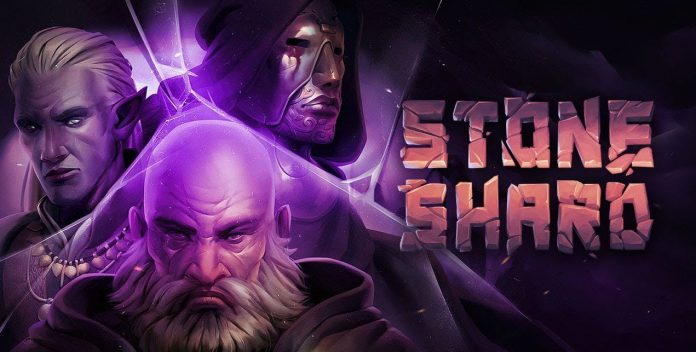The worst thing about Dungeons & Dragons Fourth Edition is that we didn’t get a video game out of it. There were a lot of reasons for that — much of it was timing, some of it was plain bad luck — but the best edition of the most famous tabletop roleplaying game in the world never actually got a chance to shine in the circumstances that it was best suited for, and that’s an absolute shame. And it is the best edition.
I’ve considered this position over many years — first and foremost by participating in a level 1 to 30 campaign in the tabletop system — and easily the best argument for the system is that it equalizes everyone’s action economy; fighters and wizards actually do basically participate in the combat system the same way, even if you whine and complain and insist that the guy with sword simply shouldn’t have as many options as the guy with the wand. The best argument against the system is that around the time you hit paragon tier at level 11, the game starts devolving into fiddly accountancy and positional cartography that turns you into a meta-level bureaucrat if you want to get the full value out of your character (this was true of 3 and 3.5 Edition too, because those editions were absolutely busted in favor of casters and splat-hunters, but we’re trying to be nice).

But the game wants you to calculate where you’re standing in a fight and how where you’re standing punishes either your enemies or yourself. It wants you to track fiddly +1 buffs and -1 debuffs here and there and everywhere. It basically worships at the throne of the edge case — how does this power interact with that power? How does this environment interact with that bonus? How do an array of positives interact with a game field of negatives? You can’t calculate all that out yourself. Or, perhaps, you could — but it would take so long you’d begin to resent the entire system that asked you to do so. You want something simple and clean, something that’ll do it for you. That means you want a computer game. Hasbro and Wizards of the Coast never gave you one and as far as 4E goes seems they never will, so you have to turn to the indie scene; Stoneshard is there to pick up the slack.
Stoneshard is still in Early Access; it’s been toodling around the Steam store for almost three years now exactly, and is trading off its last named Forgotten Lore update. We’ll get to what that represents in a bit; to introduce the product: this is a turn-based medieval roleplaying game with heavy survival and exploration elements. That is to say: you start the game in a Teutonic shithole in the backend of nowhere, trying to make the best of the most hardscrabble weapons possible, and as a mercenary you need to build your name and your luck to the point where you can actually afford not only high level gear that allows you to challenge the game’s most potent bosses, but feed, clothe, and otherwise provision yourself such that you don’t find your pockets empty of gold, your stomach empty, and your prospects narrowed to a life of eating berries off of bushes and trying to kill deer or lone wild boars for their hides. And yes, you do have to spend skill points earned through leveling up on learning how to skin animals.
So how is this related to D&D 4E? Only through its systems, which is probably for the best: the actual caretakers of that IP haven’t served it in the best possible way over the last few years. The main idea is that it is turn-based, of course, and it requires positioning and actual combat competency. That is to say that if you wish to play a wizard, you need to spend a non-trivial and non-negotiable amount of time deciding if they’re going to wield a staff in two hands or a mace and a shield — and you’ll evolve your character in very different ways depending on how you answer that question. There is no “mana” pool as distinct from a “stamina” pool; there is just Health and Energy, and if you go hard into full warrior mode, you can end up with a build that uses just as much Energy in their combat workflow as a character that goes full-on into magic.

The character I’ve played the most in my time with the game is Jonna, the itinerant sorceress. The game presents characters to play with backgrounds that describe them, but Stoneshard is not a class-based project; eventually, when the game enters full access or sometime shortly before, there will be a character creation suite. Right now, the game offers a half-dozen preset characters — and like D&D 4E, the best character it’s possible to choose is the one that has the best control over positioning. That means either Arna, the heavily control-based maiden knight, or Jonna, who has access to geomancy. And geomancy means summoning pillars from the earth to slam into people. That’s something to sink your skills and talents into, but even if you play Jonna, you have to remember — she can summon all the rock shards she wants. Eventually, in the important fights, you’ll want to spec something for her staff or for a mace and shield or, in some way, figure out how to get her to do things without resorting to the elemental froth of the system. Because everyone runs out of energy, especially when they’re in a crypt.
One of the most interesting things about Stoneshard is the save system. There isn’t one. Which is to say, you can’t go to the menu, select the Save option, select an empty slot and hit Okay. This game is committed to “realism” in the same way every game that says it is committed to “realism” actually expresses that commitment: through punishing structural choices. You can save your progress in Stoneshard by sleeping at inns, campsites, or on bedrolls. There are fewer than half a dozen inn beds for you on the map, the campsites you can access are all guarded by shitheads with flails, spears, dogs or swords, and bedrolls take up almost a full third of your inventory if you want to carry one around with you. What’s more, you actually have to take a living-rough skill when leveling up to actually get the benefits of real rest from anything but inn beds. That reinforces the real ethos of the game, which is that you should stay in town and hunt deer if you can, and the distrust of the towns of Osbrook, Mannheim, and eventually Brynn will force you into greater and more dangerous mercenary acts.

You can get bit by a snake and vomit up all your food, dehydrate yourself, and die. You can run into wolves in the woods, and die. You can run into a single angry boar in the woods, and die. You can run into a bear, and it’ll run into you, and you’ll die. You can set off into the world to do basically anything in Stoneshard, and if you don’t do it well, you’ll die. What will save you? Your magic, or your prowess with an axe, or your mastery of a bow, but the key to all of those things is your mastery of positioning. You always need to be falling back or circling around. Your accuracy with a bow will always be shit unless you’re in the right place with the right skill, of course; you’ll always be reloading your crossbow at the wrong time unless you’ve placed yourself perfectly against your foes. Your shield will be your best friend, if you’re smart enough to carry a shield. It has an entire skill tree.
How are the graphics? They’re fantastic in my estimation, but in a full factual sense Stoneshard is a pixel art game that doesn’t animate a whole lot. Most of the game’s beauty is in how muddy and sturdy the low country that you’re mucking through turns out to be; there won’t be any great feats in animation to be had, and that’s good, because if the developers were focusing on making a huge catalog of boutique combat animations, they’d be ignoring the parts of the game that actually define it.

Stoneshard is taking the approach of adding in the entire meat of the game before adding its spice and structure — the whole intended launch world is there as of the current patch, including high level enemies and NPC areas, but the plot ends abruptly all of three hours in. The last thing you should care about, in this formulation, is the story — and that makes more than a little bit of sense. Once the game has everything large and required set in stone, that means that the developers planning the story can work within the boundaries of the world as harshly and creatively as they wish. Right now, it’s a very bare bones setup — you talk to the town elders in whatever town you drift into, you take their jobs, you finish their jobs, you collect some gold. Or you just go wandering off to prove yourself to yourself in the wilderness.
What’s the point, then? What do you gain from just going through the grind? You play one of the most punishing and tactically considerate combat systems available to you as a person clicking a mouse on a screen. You learn that you need to slam guys into walls if you want to kill them, and if the dungeon you’re spelunking — contract or not — is a dungeon full of cultists, you have to be prepared for them to cut you and steal your blood to heal themselves. At the end of the day, you know the value of a single tile. And that’s the most D&D 4E experience a system can deliver.
Final Verdict
It’d have to get really stupid not to be worth $25 on Steam by the time it’s done. It’s easily worth that now. By the time the developers are done with it, it might be worth twice what you’d pay at the moment. It’s extremely playable; I currently have 90 hours in the game and I haven’t accomplished any of the dumb goals that I’ve set for myself, absent progression from the main plot.
Have any questions or feedback? Drop us a note in the comments below or email us at contact@goonhammer.com.


